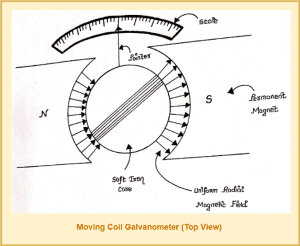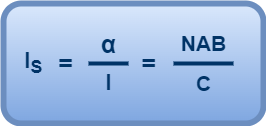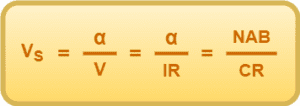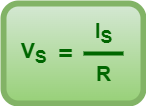Moving Coil Galvanometer-
| A galvanometer is an instrument that is used to detect small currents in a circuit. |
Principle-
The working of moving coil galvanometer is based on the principle that a current carrying coil placed in an external magnetic field experiences a torque.
Construction-
The construction of a moving coil galvanometer is explained below-
|
Diagram-


Working-
The working of a moving coil galvanometer is explained below-
|
Calculations-
Consider the magnetic torque deflects the coil through an angle α. Then, in equilibrium position, we have-
Deflecting Torque = Restoring Torque
NIABsinθ = Cα
Here,
- C is called torsional constant of the spring i.e. restoring torque produced on a unit angular twist (1°).
- B = Strength of the magnetic field
- I = Current flowing through the coil
- N = Number of turns in the coil
- A = Area of the coil
- θ = Angle between area vector and magnetic field
Since the magnetic field is radial, so the angle between area vector and magnetic field is always 90°. So, sinθ = sin90° = 1.
Thus, we have-
NIABsin90° = Cα
NIAB = Cα

Here, N, A, B and C are constants. Thus,
α ∝ I
Thus, the deflection produced in the coil is directly proportional to the current flowing through it.
Consequently, the instrument can be provided with a linear scale having equal divisions to indicate equal steps in current. Now,

OR

where-

The factor G is called as galvanometer constant or current reduction factor and is constant for a given galvanometer.
Sensitivity of Galvanometer-
A galvanometer is said to be sensitive if it shows large scale deflection even when a small current is passed through it or a small voltage is applied across it.
1. Current Sensitivity-
- It is defined as the deflection produced in the galvanometer when a unit current flows through it.
- It is denoted by Is and given as-

2. Voltage Sensitivity-
- It is defined as the deflection produced in the galvanometer when a unit potential difference is applied across its ends.
- It is denoted by Vs and given as-

Relation Between Current Sensitivity & Voltage Sensitivity-
From the above discussion,

OR

Important NoteIt may be noted from here that-
|
Factors Affecting Sensitivity-
The sensitivity of a moving coil galvanometer depends upon the following factors-
- Number of turns in its coil (N)
- Magnetic Field (B)
- Area of the coil (A)
- Torsional constant (C) of the spring and suspension wire
Increasing The Sensitivity-
The sensitivity of a moving coil galvanometer can be increased in the following ways-
- By increasing the number of turns (N) in the coil
- By increasing the magnetic field (B)
- By increasing the area (A) of the coil
- By decreasing the value of torsional constant (C)
MCQs Quiz-
MCQs Quiz on Moving Coil Galvanometer
Worksheet-
Worksheet on Moving Coil Galvanometer
Next Article-
Conversion of Galvanometer into Ammeter
Get more notes & other study material of the Chapter Moving Charges & Magnetism.

